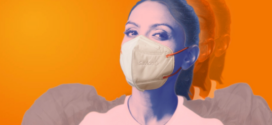We are bombarded with radiation throughout our lives. But not all radiation is harmful. For example, nonionizing radiation such as microwave, radio waves, infrared light are largely harmless. On the other hand, ionizing radiation can be quite harmful. It includes X-rays and gamma rays. Ionizing radiation can damage DNA, which in turn can cause cancer and other diseases after several years.
In the medical field, ionizing radiation is used in various procedures such as X-ray, CT scan, bone density test, mammogram and nuclear imaging. Use of these imaging techniques has increased significantly in recent decades. It brings up the question as to how much radiation can be harmful to us. Are there any safe alternatives to imaging tests? To answer such questions, here are some important things we need to know about radiation exposure risk from medical imaging devices.

X-rays
Risk associated with exposure to radiation is measured in sievert (Sv) and millisievert (mSv). Of all the radiation-based imaging techniques currently in use, the safest appears to be X-rays. That’s because radiation risk is quite low with X-ray. For example, a chest X-ray results in exposure of 0.1 millisievert. This is unlikely to be a problem. Even multiple X-rays won’t have any impact if taken over intervals of several days.
However, the risk may be more depending on which part of body is exposed. For example, abdominal X-ray generates 0.7 millisievert, which is 7 times more than chest X-ray. However, even this is considered under safe limits if used occasionally.
X-rays could be lethal if they are done repeatedly one after another in quick succession. However, something like that has never been done and unlikely to happen. To answer the original question, as to how many X-rays can kill you, we can take a look at earlier nuclear accidents.
In case of Chernobyl accident, people living in the immediate 30km radius were exposed to approximately 30 millisieverts. Cleaning workers at Chernobyl had received much higher exposure of around 250 millisieverts.
As a rule of thumb, risk of cancer increases by 10% with 1 Sv of exposure. So, you will need hundreds of X-rays to face such risks. And these risks are considered less if exposure is divided over a period of time. Note that workers at Chernobyl and Fukushima were exposed all at once. That’s why many of them had died in the following days, months and years.
CT scans more risky
As compared to X-rays, CT scans and nuclear imaging are far more harmful. For example, CT chest generates 7 mSv of exposure. CT angiogram and CT whole body create even higher exposure. Nuclear imaging cardiac stress test generates a whopping 40.7 mSv of exposure. This may increase risk of cancer, although a conclusive study has not yet been conducted.
What can you do?
You can discuss with your doctor about the risks associated with CT scans and nuclear imaging tests. Instead of these, ask if other safer techniques such as X-ray, MRI and ultrasound can help make a diagnosis. If CT scans are unavoidable, try to give ample time between two consecutive CT scans.
 Newspatrolling.com News cum Content Syndication Portal Online
Newspatrolling.com News cum Content Syndication Portal Online




